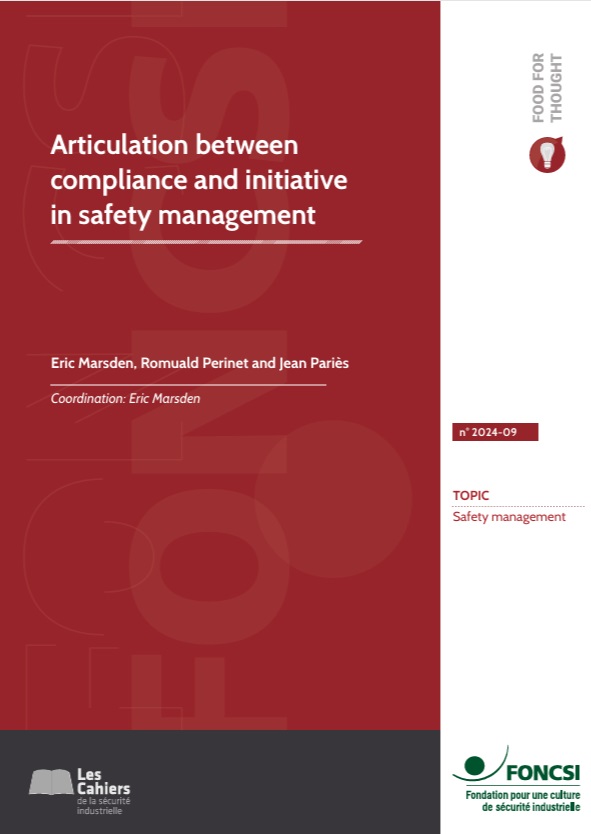
Articulation between compliance and initiative in safety management
Safety in complex systems is produced by twocomplementaryreservoirs: procedural compliance (the anticipation of potential hazards and implementation of procedures and other preventive barriers, also called “rule-based safety”) and initiative (the actions of competent front-line workers who react appropriately to conditions in real-time, also called “managed safety”). This document analyses the articulation between these two sources of safety, and the way in which it may evolve given changes in the industrial world and in societal expectations. reinforcement between procedural compliance and initiative. It suggests moving past a view of these two forms of safety as alternatives which could only develop one at the expense of the other, to explore more complex forms of interaction, such as co-development or mutual
While the core of the debate on the relationship between compliance and initiative has so far focused on the work of frontline staff and the associated micro-centered compromises, this document also examines the decisions made across the entire management line up to the executive committee (the macro-centered compromises related to safety management and risk governance), as well as inter-organizational dimensions (impacts on relations with the safety authority, the judiciary, and civil society) and the resulting systemic issues (phenomena that emerge from the interaction between system components that are not visible when analyzing each component in isolation)
| Contents |
- The rule-based approach to safety
- The “managed” approach t oproducing safety
- Articulating compliance and initiative
- Systemic approach to the link between compliance and initiative
Published under Creative Commons licence. See conditions for reproduction.
 Articulation between compliance and initiative in safety management
Articulation between compliance and initiative in safety management
